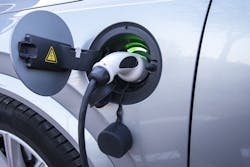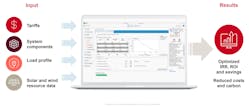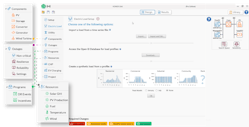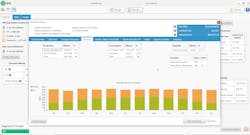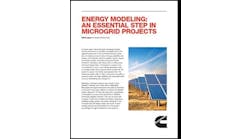But today’s grid can’t serve the increased electric load of electrifying everything and charging EVs at scale, and upgrading the grid is costly and slow. The answer is to deploy more renewable energy microgrids or other distributed energy resources (DERs). Either delivers a much faster — and, in most cases, better, cleaner and less costly — solution than distribution grid upgrades.
For microgrids and DERs to succeed, however, it’s critical to consider multiple complex variables. There are often numerous system options to evaluate to find the best, least-cost option. For example, microgrids and DERs must be designed to serve the electric load; address tariffs, incentives, demand response and high EV charging loads; operate even when the grid goes down; and meet the specific project goals currently and into the future.
Here’s a guide on how — and how not — to determine the best, least-cost solution for your project, whether designing or evaluating a system.
Get started: Know the problem you’re solving
Microgrids or DERs are like 12-in-1 pocket tools. They’re loaded with features, but the system’s value depends on stakeholders’ goals. These goals typically fall into four categories:
- Provide reliable EV charging.
- Increase resiliency.
- Save on energy costs; enable revenue streams.
- Reduce carbon emissions.
Different objectives drive different design decisions. Start by asking questions that clarify project stakeholders’ primary goals, including:
- What is the value of resiliency?
- Do all loads need to be powered if the grid goes down, or just critical loads?
- What are current and future EV charging needs?
- What incentives are available?
After gathering this information in collaboration with project stakeholders, the next critical steps involve modeling possible solutions through a prefeasibility analysis.
Prefeasibility analysis
The next critical step of project development should be to get insights into design trade-offs. In this prefeasibility phase, the goal is to develop the big picture of the project’s technical and economic performance. For example, it’s essential to determine the approximate components and size needed to serve the electric load and meet project goals, including:
- EV charging capacity and return on investment.
- Resiliency.
- Reduced emissions, energy costs and demand charges.
- Acceptable internal rate of return (IRR).
In this phase, you want to spend minimal time on details when inputting the necessary information. You can accelerate the process using a distributed energy modeling and optimization tool that includes databases for load profiles, generic equipment choices, tariffs, incentives, demand response and EV charging. Sensitivity analysis is beneficial at this stage.
Once you add these parameters to your modeling tool, optimize possible scenarios. The results will show the winning system based on established criteria. Still, examine other possible system designs that may be very close regarding IRR but much better along other criteria. The results demonstrate the impact of making various trade-offs.
Then use these results as a communication tool to help all stakeholders evaluate the impact of trade-offs on the project’s primary goals. The prefeasibility analysis is also extremely helpful in communicating with vendors to help them propose the most appropriate equipment.
Design phase analysis
Once you have completed the prefeasibility analysis, you can move to the design phase where accuracy becomes essential. This phase requires detailed load and other data, which you can add to the software model created in the prefeasibility stage. After the software optimizes the design, you can generate a proposal to present to project funders.
Post-construction analysis
After the microgrid or DER has been in operation for a year, many developers input the actual operational data gathered into their modeling tool and recalculate. They use the results to update battery dispatch strategies, set new demand limits or make other controller setting adjustments.
Don’t make the intuition mistake
Some developers rely on intuition or knowledge of past project components and output when deciding on a project design. Don’t do this; each project’s many variables and design trade-offs are too complex to rely on intuition. By not simulating numerous possible solutions in an optimization model, designers may build an unnecessarily expensive project or one that underperforms.
Because of the complexity of the problem and the number of trade-offs, it’s not instinctively clear which project design is better. You can reliably design better systems using an iterative process, modeling each system and utilizing robust modeling software’s sensitivity analysis and optimizations.
Figures 1 and 2: Software modeling and optimization tools such as HOMER® Grid enable you to input the technical and economic variables particular to your project’s location and access libraries for load profiles, extensive utility tariff options, components, outages, demand response and incentive programs, and resource data such as solar irradiance data. The software will then run thousands of simulations on various system designs, perform sensitivity analysis and output the least-cost, best-performing system.
Figures 3 and 4: Two results screen examples show the winning system architecture for this project. The top screen shows the costs offset from revenue of firm, or on-demand EV charging and managed, or deferrable, charging. The bottom screen shows the monthly electrical production of solar photovoltaic and the utility.
